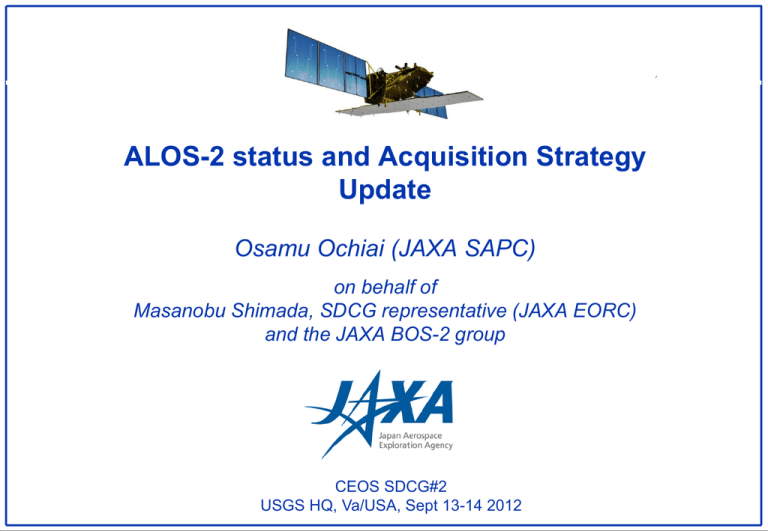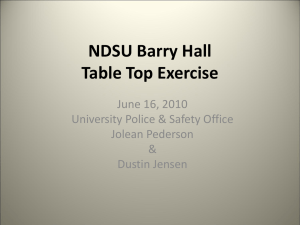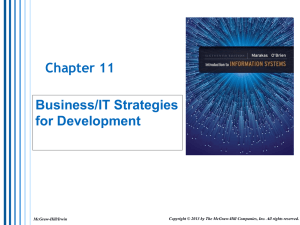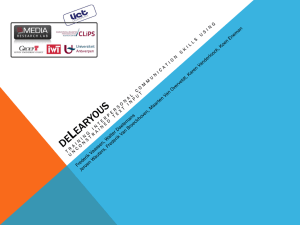ALOS-2 Basic Observation Scenario
advertisement

ALOS-2 Basic Observation Scenario ALOS-2 status and Acquisition Strategy Update Osamu Ochiai (JAXA SAPC) on behalf of Masanobu Shimada, SDCG representative (JAXA EORC) and the JAXA BOS-2 group CEOS SDCG#2 USGS HQ, Va/USA, Sept 13-14 2012 ALOS-2 Basic Observation Scenario ALOS-2 satellite Launch Revisit time Orbit type Altitude LSDN ALOS-2 : 2013 : 14 days : Sun-synchronous : 628 km +/- 500 m (for reference orbit) : 12:00 +/- 15 min PALSAR-2 X L-band Synthetic Aperture Radar Active Phased Array Antenna type Solar paddles Y two dimensions scan (range and Z azimuth) Antenna size : 3m(El) x 10m(Az) Bandwidth : 14 – 84MHz Peak transmit Power : 5100W Observation swath : 25 – 490km Resolution : Range: 3 m to 100 m Azimuth: 1 m to 100 m SAR antenna ALOS-2 PALSAR-2 Basic Observation Specifications Scenario Bandwidth Resolution Swath Polarization NESZ Rg S/A Az 84MHz High sensitive 42MHz 28MHz ScanSAR nominal 14MHz 28MHz ScanSAR wide 14MHz 3m 6m 10m 100m 60m 50km 50km 70km SP/DP -24dB 25dB 25dB SP/DP/QP/CP -28dB -26dB 23dB 25dB 20dB 23dB Spotlight Ultra Fine 84MHz Rg×Az: 3×1m Rg×Az: 25×25km SP -24dB 25dB 20dB Fine 350km (5-scan) SP/DP -26dB -23dB 25dB 20dB 490km (7-scan) -23dB 20dB 20dB SP : HH or VV or HV , DP : HH+HV or VV+VH , FP : HH+HV+VH+VV , CP : Compact pol (Experimental mode) Main applications: Fine beam (DP): Forest and land cover monitoring / DinSAR ScanSAR (DP): Rapid deforestation / wetlands / InSAR (ScanSAR-ScanSAR) Spotlight (SP): Emergency observations Ultra Fine (SP) : Global map, InSAR base mapping High sensitive (QP): Global map ScanSAR wide (SP) : Polar ice 3 ALOS-2 Basic Observation Scenario ALOS-2 status ALOS-2 is planned for launch in 2013, with a design lifetime of 7 years. A global systematic acquisition strategy (“Basic Observation Scenario” – BOS) is under development. It is comprised of a global (described here) and a dedicated national component covering Japan. The ALOS-2 BOS builds on the ALOS acquisition strategy (2006-2011). It will provide continuity of key acquisitions but with enhanced image characteristics (spatial resolution, polarisations, radiometric sensitivity). The ALOS-2 Data Policy is yet to be determined. ALOS-2 Basic Observation Scenario The ALOS-2 Basic Observation Scenario (BOS) – Global component – (as of September 2012) ALOS-2 Basic Observation Scenario Global land areas – baseline mapping Temporal repeat: 2 cov/year GSD: 10 m Mode: Dual-pol (HH+HV) Prio 1 Prio 2 ALOS-2 Basic Observation Scenario Global land areas – VHR baseline mapping Temporal repeat: 1 cov/ 3 years GSD: 3 m Mode: Single-pol (HH or HV) (TBD) Prio 1 Prio 2 ALOS-2 Basic Observation Scenario Global land areas – Polarimetric baseline Temporal repeat: 1 cov/ 3 years GSD: 6 m Mode: Quad-pol (HH+HV+VV+VH) ALOS-2 Basic Observation Scenario Forest monitoring Temporal repeat: 2-6 cov/year (tropics: 6 cov, incl. 14-day InSAR) GSD: 10 m Mode: Dual-pol (HH+HV) ALOS-2 Basic Observation Scenario Wetlands & Rapid deforestation monitoring Temporal repeat: 9 cov/year (42 days repeat) GSD: 100 m Mode: WB-350km (HH+HV) ALOS-2 Basic Observation Scenario Crustal Deformation Temporal repeat: 2-6 cov/year & 9 cov/year (42 d) GSD: 10 m & 100 m Mode: Dual-pol (HH+HV) & WB-350km (HH+HV) ALOS-2 Basic Observation Scenario Polar Ice Temporal repeat: 3 cov/year GSD: 100 m Mode: WB (HH or HH+HV) (TBD) Right look Left look ALOS-2 Basic Observation Scenario Glacier movement (Super Sites) Temporal repeat: 2-3 cov/year GSD: 10 m Mode: SP (HH) ALOS-2 Basic Observation Scenario Observation pattern for annual acquisitions * 10m DP (HH+HV) 10m SP (HH) 3m SP (HH or HV) 6m QP (HH+HV+VV+VH) 100m WB (HH+HV) 100m WB (HH+HV) (Right) (Left) * 3m SP and 6m QP modes require 3 years for global coverage ALOS-2 Basic Observation Scenario Pattern repeated on a 3-year basis ALOS-2 Basic Observation Scenario Emergency observations Emergency observations – such requested through the International Disaster Charter, by Japanese institutions or by JAXA itself – have highest priority and superseed the Basic Observation Scenario programming. Cal/Val Requests related to Cal/Val also have higher priority than the BOS, but are as far as possible already integrated into the BOS planning. Top priority Satellite house-keeping has top priority and superseed all the above. ALOS-2 Basic Observation Scenario Schedule 2011-2012: Observation plan development with associated software simulations to optimise data collection verses recording and downlink capacity and use of other system resources (power, etc.) 2013: BOS implementation and satellite launch L - L+2m: Initial mission check L+2 - L+7m: Cal/Val phase L + 7 m: Start of distribution of standard products 2013+ The BOS plan will be reviewed on a regular basis (ALOS: 2 times/year) by JAXA and related Japanese institutions, and modified as required. ALOS-2 Basic Observation Scenario Thank you ありがとう。 CEOS SDCG#2 USGS HQ, Reston (VA) Sept 13-14, 2012







